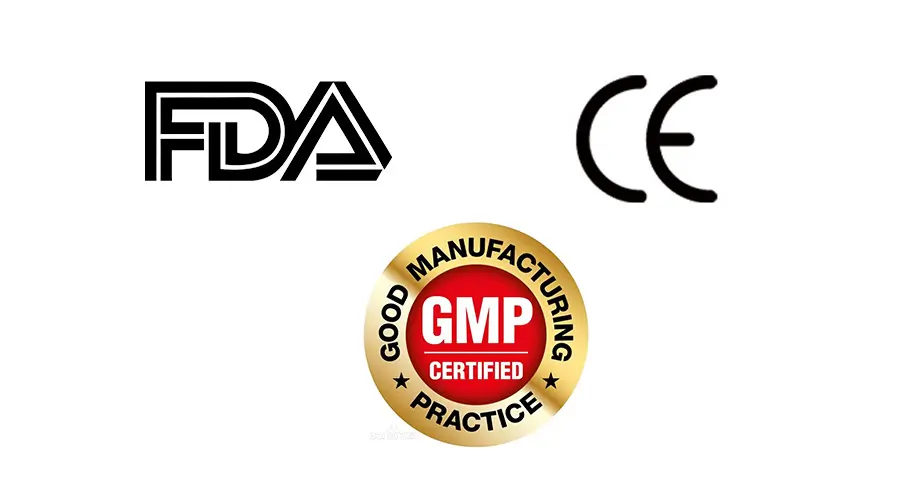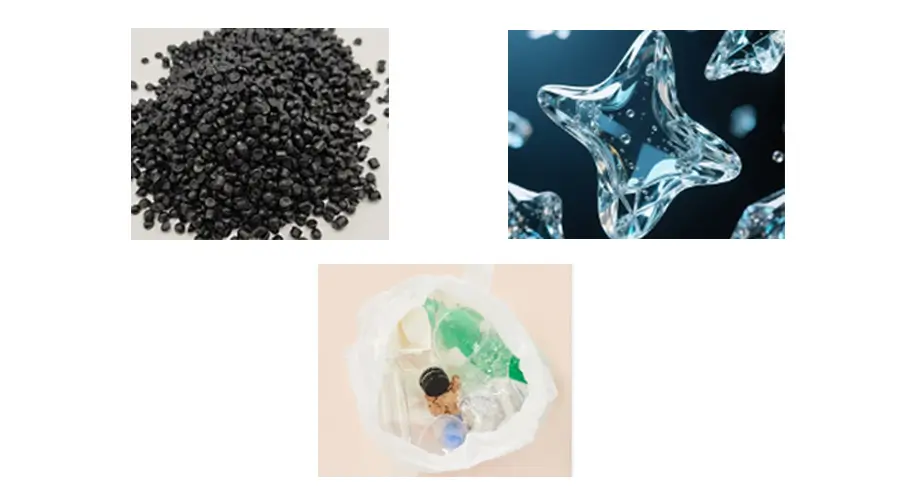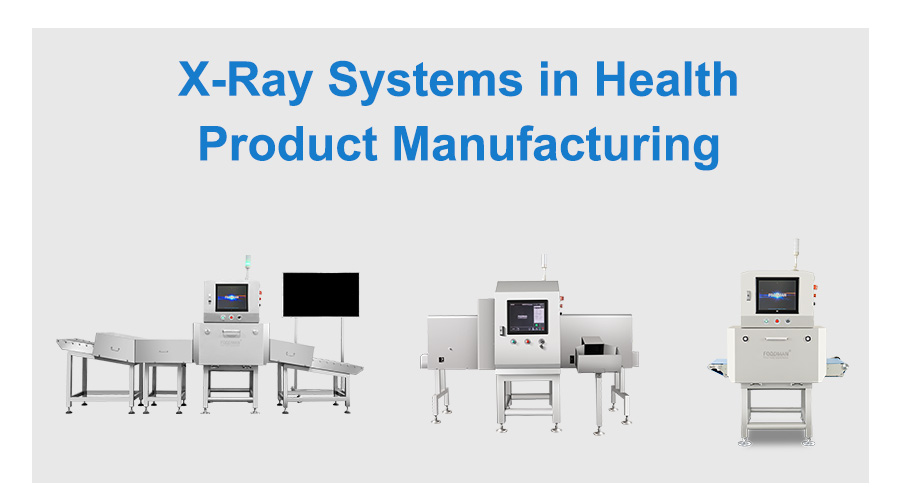Introduction: Why Accuracy Matters in Health Product Manufacturing
Brief Overview of the Critical Nature of Product Safety in Healthcare and Pharmaceutical Industries
In the healthcare and pharmaceutical industries, ensuring the safety, purity, and precision of every product is not optional—it is essential. Whether it’s medication dosage, the sterility of medical packaging, or the integrity of complex device kits, even the smallest deviation can have serious consequences. This makes X-Ray inspection technology an invaluable part of the modern quality control process. By using an advanced X-Ray inspection system, manufacturers can detect internal defects, foreign objects, or inconsistencies in real time—without damaging the product. A well-designed X-Ray inspection machine adds a layer of reliability and consistency that manual checks or visual inspections cannot match.
Increasing Regulatory Pressures (FDA, GMP, CE, etc.)
To maintain public trust and meet rising expectations from regulatory authorities such as the FDA, GMP, and CE, manufacturers must ensure that their production processes are both highly accurate and fully traceable. These agencies require strict adherence to guidelines on documentation, contamination control, and batch integrity. Any failure to comply can result in fines, recalls, or even shutdowns.

Introduction to X-Ray Inspection as a Reliable Quality Control Solution
As compliance demands rise, so does the need for efficient, non-destructive, and intelligent inspection tools. X-Ray inspection systems have become the gold standard in pharmaceutical and health product manufacturing because they deliver dependable accuracy while streamlining production. With features such as automatic defect recognition, real-time imaging, and data recording for audits, X-Ray inspection machines support not only higher quality outcomes but also better regulatory alignment. These systems provide peace of mind for manufacturers and ensure that every product reaching a patient is safe, effective, and exactly as intended.
The Role of X-Ray Inspection in Ensuring Medical-Grade Quality
Non-destructive, Real-Time Inspection for Tablets, Capsules, Powders, Liquids
In modern pharma manufacturing, the ability to maintain product integrity without disrupting production is critical. X-Ray inspection systems offer a non-destructive, real-time solution to inspect a wide range of pharmaceutical forms—tablets, capsules, powders, and even liquids. These systems can analyze internal structures without opening the packaging, ensuring that every product meets stringent quality standards while maintaining production efficiency. This is especially vital in health product manufacturing, where precision and sterility are paramount.

Foreign Body Detection: Glass, Metal, Rubber, Bone, Plastic
Contamination is one of the most serious risks in pharmaceutical inspection. X-Ray inspection machines can detect a wide variety of foreign bodies, including glass shards, metal fragments, rubber pieces, bone, and plastic contaminants. These contaminants may enter the production line through raw materials, equipment wear, or human error. By leveraging high-resolution imaging and intelligent algorithms, X-ray systems act as a safety net, reducing the chances of product recalls and protecting patients from harm.
Dosage Uniformity: Detecting Underfills or Overfills
Another vital function of X-Ray inspection in pharma manufacturing is verifying dosage consistency. Whether it’s a liquid in a vial, powder in a sachet, or capsules in a blister pack, underfilled or overfilled products can compromise treatment efficacy and patient safety. With an X-Ray inspection system, manufacturers can ensure each unit contains the correct amount of active ingredient—without opening or destroying the packaging. This level of precision not only supports consistent therapeutic outcomes but also helps meet FDA 21 CFR Part 11 compliance requirements by generating secure, auditable inspection records.
Seal and Blister Pack Integrity Checks
Packaging is the final barrier protecting medical products from contamination. Poorly sealed blister packs, damaged foil, or compromised containers can lead to sterility failure and loss of product efficacy. Advanced X-Ray inspection machines are equipped to verify seal integrity, ensure proper closure, and detect micro-defects in packaging—all in real time. These inspections help reduce rework, minimize waste, and ensure that every unit meets the safety standards demanded by both regulators and consumers.
Meeting Compliance with Confidence
How X-Ray Systems Help Meet International Standards (FDA 21 CFR Part 11, GMP, ISO, etc.)
In the pharmaceutical and health product industries, compliance is not optional—it’s a foundation for trust, safety, and market access. Regulations such as FDA 21 CFR Part 11, GMP (Good Manufacturing Practices), and ISO 13485 are designed to ensure product quality, patient safety, and traceability. X-Ray systems play a critical role in helping manufacturers achieve and maintain compliance with these international standards.
Modern X-Ray inspection systems are engineered to comply with regulatory demands by offering non-destructive, highly accurate, and fully traceable inspection methods. These systems not only detect physical defects such as foreign bodies or improper fills but also integrate seamlessly into digital validation systems—offering both performance and compliance in a single solution.
Data Traceability and Audit-Ready Reports
One of the key requirements of FDA 21 CFR Part 11 and other global standards is secure and reliable data traceability. Advanced X-Ray inspection machines are equipped with software that enables automatic logging of inspection results, system performance, and operator interactions. These logs are encrypted and time-stamped, creating a secure audit trail that is essential during internal reviews or regulatory audits.
Audit-ready reports can be generated with just a few clicks, enabling pharmaceutical inspection teams to easily demonstrate compliance, track inspection history, and ensure accountability across shifts and locations. These systems also support user authentication, electronic signatures, and system access control—core components of 21 CFR Part 11 compliance.
Integration into Pharma Validation Workflows (IQ/OQ/PQ)
Validation is a cornerstone of pharma manufacturing, and integrating new technology into this ecosystem must align with structured protocols like Installation Qualification (IQ), Operational Qualification (OQ), and Performance Qualification (PQ). Leading X-Ray systems are designed with validation in mind, providing manufacturers with full documentation and support to streamline the qualification process.
During IQ, the equipment is installed according to design specifications. During OQ, system performance is tested under anticipated conditions, and in the PQ phase, the system is shown to perform reliably in routine use. Advanced X-Ray inspection systems come with validation-ready features and detailed documentation, making it easier for QA/QC teams to implement the equipment confidently and meet compliance milestones faster.
Advanced Features for Precision and Safety
In the highly regulated world of health product and pharmaceutical manufacturing, precision and safety are non-negotiable. X-ray inspection systems have evolved to meet these demands, offering advanced features that enable accurate, efficient, and compliant quality control. Below, we explore the cutting-edge capabilities that make modern X-ray inspection machines indispensable for today’s production lines.
Dual-Energy Technology for Material Differentiation
One of the most powerful advancements in X-ray inspection is dual-energy technology. By using two energy levels to scan a product simultaneously, the system can differentiate between materials based on their density and atomic number. This is particularly useful in health product manufacturing, where detecting foreign substances like rubber, glass, or plastic inside blister packs, syringes, or sealed medical containers is crucial.
Dual-energy X-ray inspection systems provide higher accuracy in identifying unwanted materials, even in complex or overlapping structures, minimizing false positives and ensuring only defective products are flagged.

AI-Powered Defect Recognition (Cracks, Contamination, Air Bubbles)
Modern X-ray inspection machines are now equipped with artificial intelligence (AI) that enhances their ability to identify even the most subtle defects. These AI-driven systems are trained on thousands of defect images to recognize patterns such as cracks in capsules, contamination in powders or liquids, or air bubbles in injectable products.
AI-powered X-ray inspection systems ensure consistent, real-time detection that improves overall product safety while reducing the dependency on human inspection, which can be inconsistent or slow in high-volume environments.
High-Resolution Imaging for Micro-Contaminants
To detect micro-defects and tiny foreign bodies, high-resolution imaging is essential. Advanced X-ray inspection equipment delivers superior image clarity, enabling the identification of contaminants as small as a few microns in size. This is vital for products where even the smallest impurity—such as a shard of glass or a fine metal particle—can compromise sterility and patient safety.
These systems are particularly useful in pharmaceutical inspection, where micro-contaminants in ampoules, vials, and blister packs must be caught before they reach the market.
Automatic Rejection System to Eliminate Defective Products Without Slowing Production
Speed and accuracy go hand in hand in pharmaceutical manufacturing. Modern X-ray inspection machines feature automatic rejection systems that instantly remove non-compliant products from the production line without interrupting workflow. These rejectors are integrated with conveyor systems and can sort products based on a variety of defect parameters.
This automation not only ensures the integrity of your product line but also reduces labor costs and minimizes the risk of defective items reaching consumers—critical for maintaining compliance with regulations such as FDA 21 CFR Part 11.
Real-World Applications & Case Examples
Advanced X-ray inspection systems have become a critical asset across the health product manufacturing sector, providing unmatched reliability and accuracy in detecting quality issues without damaging the product. These systems are especially effective in identifying hidden defects that traditional inspection methods may overlook, ensuring both regulatory compliance and patient safety.
Inspection of Blister Packs, Vials, Syringes, Medical Pouches
Health product packaging varies widely—from blister packs and glass vials to pre-filled syringes and sterile medical pouches. Each of these packaging types presents its own set of inspection challenges, such as detecting micro-leaks, checking fill levels, or verifying component presence.
Modern X-ray inspection machines equipped with high-resolution imaging and AI-powered defect detection can scan through opaque materials and complex packaging to:
- Identify missing tablets or capsules in blister packs
- Verify fill levels and seal integrity in vials and ampoules
- Detect trapped air or foreign particles in syringes
- Confirm the presence of all required instruments and components in medical kits and pouches
These real-time, non-destructive inspections are essential for pharmaceutical inspection, where even a minor oversight can compromise product sterility or dosage accuracy.
Case Study Example: Reducing False Rejects in a Nutraceutical Production Line
A nutraceutical manufacturer faced ongoing challenges with excessive false rejects in its packaging line for herbal supplement blister packs. Despite the use of visual inspection systems, the process often flagged good products as defective due to minor cosmetic irregularities or packaging distortions.
After integrating an AI-powered X-ray inspection system, the manufacturer saw immediate improvements. The system’s advanced defect recognition capabilities were able to distinguish between actual missing tablets and harmless visual inconsistencies. As a result:
- False reject rates dropped by over 40%
- Manual rechecks and repackaging efforts decreased significantly
- Inspection throughput increased without sacrificing accuracy

Result: Improved Efficiency, Reduced Product Waste, Enhanced Consumer Trust
By deploying intelligent X-ray inspection equipment, the manufacturer not only reduced waste but also increased overall operational efficiency. Products were inspected more accurately and at a faster pace, reducing bottlenecks and lowering production costs. Perhaps most importantly, the brand experienced a noticeable boost in consumer confidence, with fewer complaints and returns related to incomplete or faulty packaging.
This case is a clear example of how X-ray inspection can offer tangible benefits—improving both business performance and the end-user experience. In an industry where precision and compliance are paramount, adopting modern X-ray inspection machines is no longer optional—it’s a competitive advantage.
Benefits Beyond Inspection
While the primary function of X-ray inspection systems in pharmaceutical and health product manufacturing is to ensure product safety and compliance, the benefits extend far beyond quality control alone. These systems are powerful enablers of efficiency, cost savings, and brand protection—helping manufacturers thrive in a highly regulated and competitive industry.
Enhanced Production Efficiency and Reduced Manual Inspection Labor
Traditional inspection processes often rely on manual checks, which are not only time-consuming but also prone to human error. By implementing advanced X-ray inspection machines, manufacturers can automate inspection at high speeds without compromising accuracy. This leads to:
- Streamlined production workflows
- Reduced reliance on manual labor for inspection tasks
- Improved consistency in quality control
- Higher throughput rates
With the help of AI-driven analytics and real-time feedback, X-ray inspection equipment also helps identify process inefficiencies, allowing for continuous improvement across the production line.
Minimizing Costly Recalls
Product recalls in the healthcare and pharmaceutical industries can be financially devastating and damaging to a brand’s credibility. By identifying foreign bodies, underfills, broken seals, or missing components before products leave the facility, X-ray inspection systems act as a critical safeguard.
Preventing defective products from reaching the market reduces the risk of:
- Regulatory penalties
- Lawsuits
- Product loss and waste
- Harm to patients and consumers
Early detection through X-ray inspection is a proactive measure that protects both the manufacturer and the end user.
Protecting Brand Reputation in the Health Sector
In an industry where trust and reliability are everything, even a single packaging error or contamination incident can erode consumer confidence. A commitment to safety and precision—demonstrated through the use of cutting-edge X-ray inspection systems—signals a manufacturer’s dedication to quality and patient care.
The ability to consistently deliver safe, accurate, and sterile products strengthens a brand’s reputation and builds long-term loyalty among healthcare providers, pharmacists, and consumers alike.
Supporting End-to-End Automation in Pharmaceutical Manufacturing
As pharma manufacturers move toward Industry 4.0, integrating X-ray inspection machines into an automated, data-driven production environment is essential. These systems not only inspect, but also communicate with upstream and downstream processes, enabling:
- Real-time quality feedback
- Automated product rejection
- Seamless integration with ERP, MES, and SCADA systems
- Audit-ready reporting for FDA 21 CFR Part 11 compliance
By supporting full-line automation, X-ray inspection equipment becomes a vital part of the smart factory ecosystem—enhancing transparency, compliance, and operational resilience.
Conclusion
Recap of the Benefits of Using X-Ray Inspection for Medical-Grade Manufacturing
In the fast-evolving world of health product manufacturing, maintaining the highest standards of safety, accuracy, and compliance is not optional—it’s critical. X-ray inspection systems, especially those built for pharmaceutical and medical-grade applications, play a pivotal role in ensuring these standards are consistently met.
From non-destructive, real-time inspection to AI-enhanced defect recognition, modern X-ray inspection machines offer unmatched precision in detecting foreign bodies, verifying fill levels, ensuring blister pack integrity, and safeguarding dosage accuracy. They not only help meet stringent global regulations like FDA 21 CFR Part 11 and GMP, but also reduce product waste, minimize recalls, and enhance overall production efficiency.
Whether it’s inspecting blister packs, vials, or complex medical kits, X-ray inspection equipment helps manufacturers maintain a strong reputation for safety and quality—while also protecting end-users from potentially harmful product flaws.
How Your Facility Can Implement or Upgrade X-Ray Systems for Reliable Safety and Compliance
Implementing or upgrading to a modern X-ray inspection system is a strategic move toward smarter, safer, and more efficient manufacturing. Here’s how to get started:
- Evaluate your current inspection process: Identify gaps in detection capability, speed, or compliance.
- Choose a system tailored to your application: Ensure compatibility with your packaging types, product formats, and inspection goals.
- Prioritize compliance features: Look for solutions that support validatable processes, audit trails, and data integrity standards.
- Integrate with your smart factory ecosystem: Leverage IoT connectivity and AI to support predictive maintenance and quality optimization.
With the right solution, your facility can achieve full-spectrum quality control, reduce operational risks, and future-proof your inspection process for evolving industry demands.


